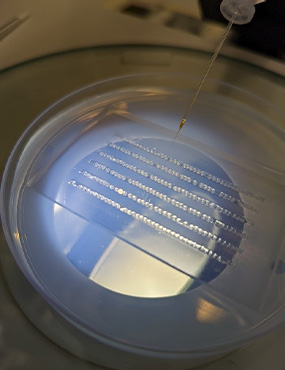
Genetic biocontrol of invasive vertebrates
Invasive pest vertebrates, in particular the European carp have highly negative effects on the ecosystems in Australian rivers and waterways. Due to their high tolerance of diverse habitats and rapid population expansion, they have proven to be a very hard species to remove or control through the use of traditional pest control methods.
In the last 10 years, the use of gene drives to spread a gene through a population of invasive animals has been investigated and hotly debated amongst the scientific community and relevant stakeholders. However, despite a variety of positive and negative aspects of the technology, carp are not a particularly suitable species for this approach. The 2-4 years they take to reach sexual maturity means a gene drive would take far too long to be effective in any kind of reasonable time frame.
A more recent, novel genetic strategy has been conceived that is known as self-stocking incompatible male system (SSIMS), components of which have already been shown to work in yeast and flies. This system works by combining two key concepts. Firstly, generating a synthetic species via “engineered genetic incompatibility” (EGI) to prevent the synthetic species from creating viable offspring with WT animals. Secondly, developing a genetic system that causes female-specific lethality. When combined this allows for the engineered animals to be both “self-stocking” in that more males can be generated, but also self-limiting due to the lack of any viable female offspring.
The goal of this project is to develop both components of the SSIMS system in the model species Danio rerio (zebrafish) and combine them together to demonstrate the viability of SSIMS as a method of population control for European carp specifically, and invasive vertebrates more generally.
Funding: Centre for Invasive Species Solutions Grant
Partners: Commonwealth Scientific and Industrial Research Organisation (CSIRO)
Contact: Dr Chandran Pfitzner